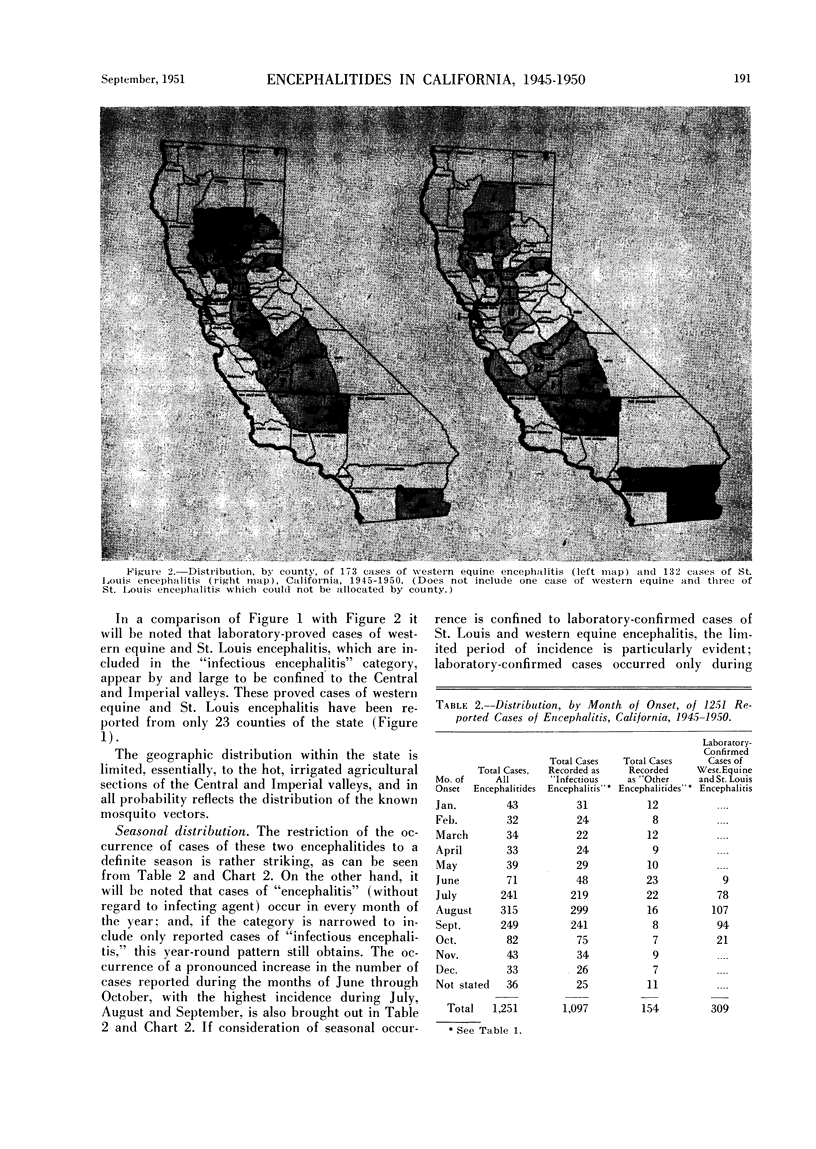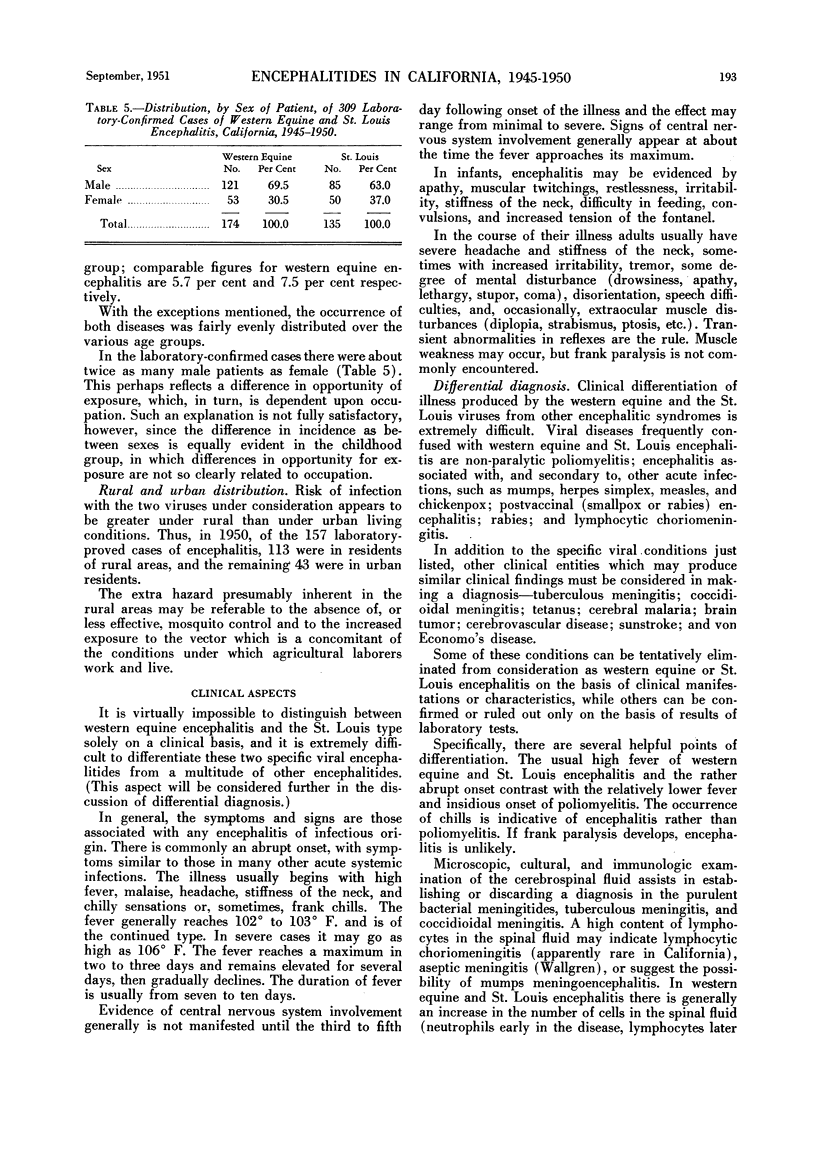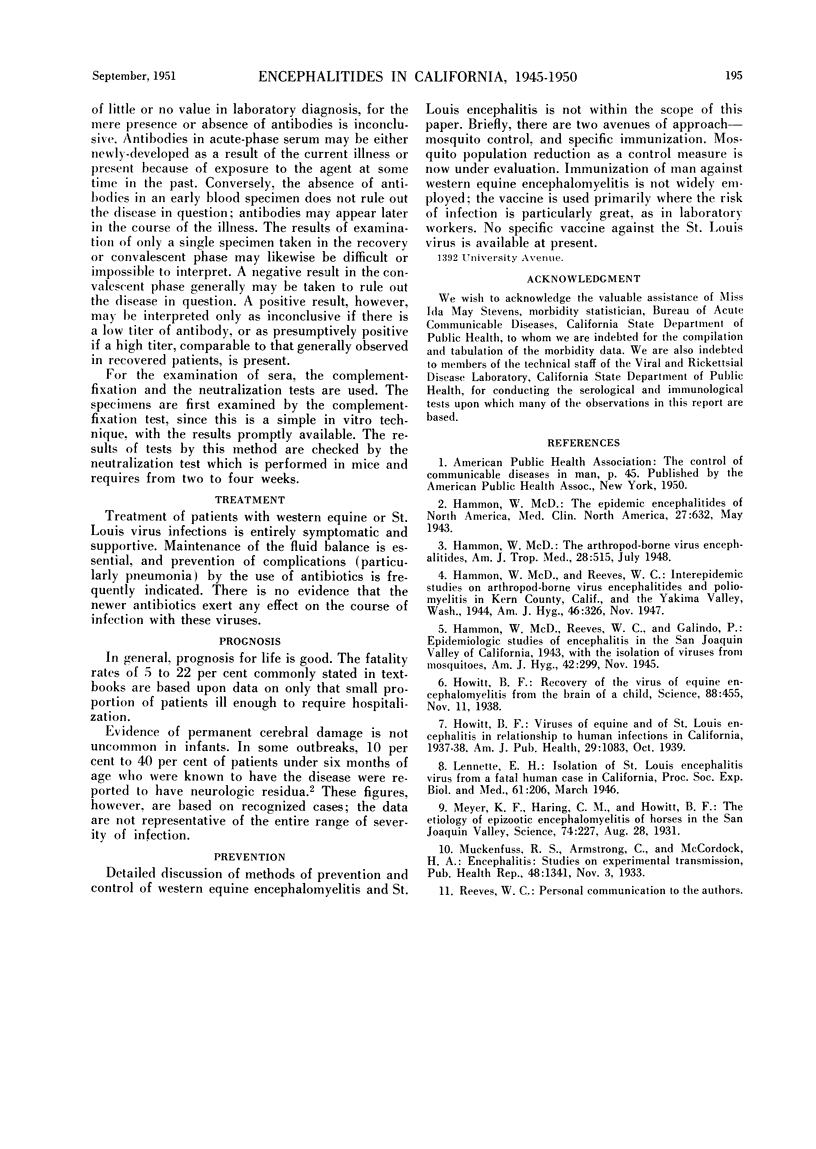Abstract
A large group of etiologic agents, some known and some unknown, produce in man a clinical syndrome now labeled “infectious encephalitis.”
The separation, from this larger group, of single disease entities which cause similar clinical symptoms is possible, but calls for diagnostic acumen plus supporting laboratory evidence. Two etiologically specific entities, western equine encephalitis and St. Louis encephalitis, are frequently encountered in rather well-defined areas of California, the Central Valley and Imperial Valley; and there is a definite seasonal pattern of occurrence—June through October. There are certain guides that are helpful in differential diagnosis. Establishing a diagnosis on the basis of clinical evidence is difficult. Laboratory studies are of great importance not only for diagnosis in the individual case but for advancement of etiology. Specimens are worthless unless taken at proper intervals and submitted by methods described.
It is probable that encephalitides caused by still unknown agents exist in California. The isolation and identification of new encephalitogenic viral agents will depend in large measure upon the submission by physicians of suitable specimens from patients with central nervous system disease in which the cause is obscure.
Full text
PDF






Images in this article
Selected References
These references are in PubMed. This may not be the complete list of references from this article.
- Howitt B. F. Viruses of Equine and of St. Louis Encephalitis in Relationship to Human Infections in California, 1937-1938. Am J Public Health Nations Health. 1939 Oct;29(10):1083–1097. doi: 10.2105/ajph.29.10.1083. [DOI] [PMC free article] [PubMed] [Google Scholar]
- Howitt B. RECOVERY OF THE VIRUS OF EQUINE ENCEPHALOMYELITIS FROM THE BRAIN OF A CHILD. Science. 1938 Nov 11;88(2289):455–456. doi: 10.1126/science.88.2289.455. [DOI] [PubMed] [Google Scholar]
- Meyer K. F., Haring C. M., Howitt B. THE ETIOLOGY OF EPIZOOTIC ENCEPHALOMYELITIS OF HORSES IN THE SAN JOAQUIN VALLEY, 1930. Science. 1931 Aug 28;74(1913):227–228. doi: 10.1126/science.74.1913.227. [DOI] [PubMed] [Google Scholar]




